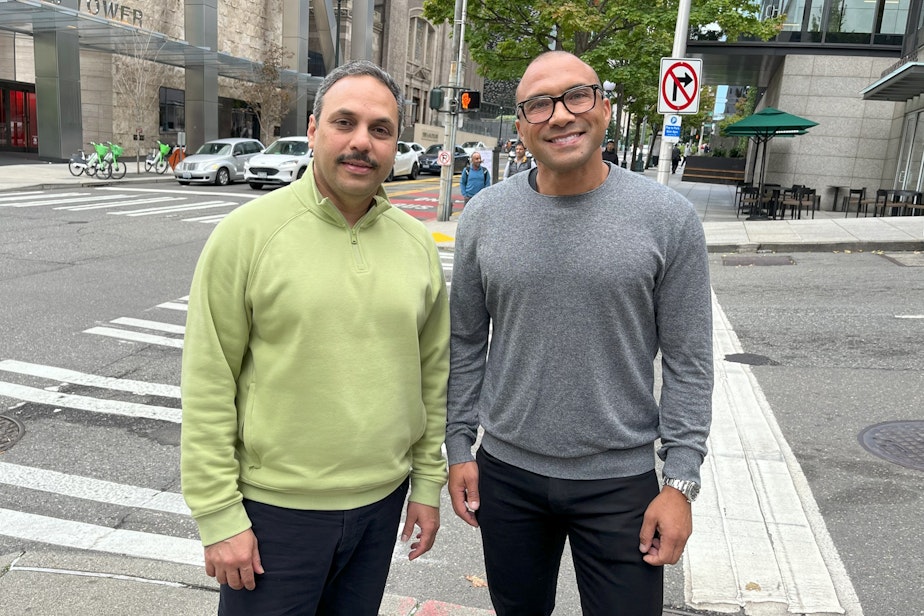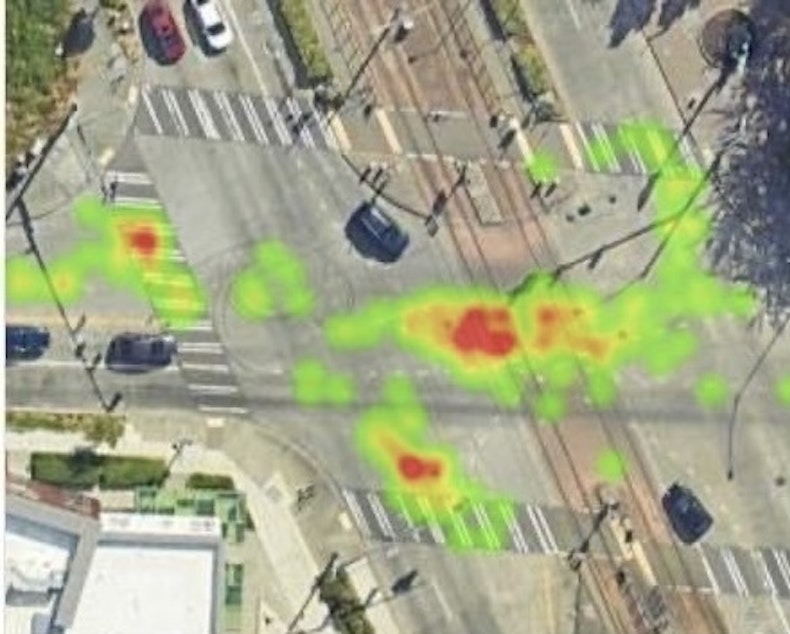Can AI reduce traffic deaths? These Seattle engineers are putting it to the test

Generally, traffic engineers know what will make intersections more safe, for example, by slowing down traffic, or by letting pedestrians enter the crosswalk before cars get the green light.
But given limited funds, how do traffic engineers decide which projects are most pressing?
At the Seattle Department of Transportation, they're testing whether new artificial intelligence tools could help.
Venu Nemani works for Seattle’s Department of Transportation. He says the old methods for analyzing safety at intersections gave traffic engineers limited data to work with.
“Right now, in a traditional approach, we look at the police crash reports,” he says.
Or, they do direct observations, standing out at intersections during peak traffic periods.
Those kinds of analysis take a lot of time and aren't very precise.
Meanwhile, Seattle has struggled in its Vision Zero goal to eliminate pedestrian deaths by the year 2030.
Sponsored
Technology offers a different approach.
As part of an 18-month pilot, an artificial intelligence system will monitor feeds from wide-angle cameras at two intersections near Othello and Columbia City light rail stations. The AI can distinguish pedestrians and cyclists from cars, buses, and trains, and understands how they move.
Sound Transit received the grant, and the work is being coordinated with SDOT.

The new system recognizes safety problems that don't get written up in police reports.
“This helps us now look at crashes before they happen,” Nemani says.
Sponsored
Those near-misses are far more numerous than actual crashes. And because the system can run 24 hours a day without tiring, it generates a mountain of data. The AI then generates a heat map, showing traffic engineers precisely where in the intersection pedestrians face the greatest danger.

In one company's demonstration for the Department of Transportation, an AI system showed that in a 30-day period, 3,649 pedestrians didn't use a University District crosswalk that was only a few feet away.
That tells engineers the crosswalk is in the wrong place, or maybe they need better signage.
"Or we can think of how to phase the signal, to actually fit the pedestrian behavior that we are seeing, that we can accommodate reasonably," he says.
For example, if pedestrians are crossing the intersection diagonally, he says the solution could be to create a signal that lets pedestrians cross in all directions at the same time.
Sponsored
In another example, the AI showed danger points about a third of the way across the crosswalk. That indicates conflicts between pedestrians and cars turning right. Nemani says the city is rolling out "leading pedestrian interval" timing (which gives pedestrians a head start) across the city but would prioritize it at intersections showing a high number of such near-miss hot spots.
The data is also time stamped. That way, engineers can determine whether the intersection is more dangerous at night, or if near-misses tend to happen when large crowds are present, such as after a sports event.
Nemani says the system’s cameras don’t zoom in enough to identify people’s faces. Individuals remain anonymous. So he says it doesn’t conflict with Seattle’s surveillance ordinance.
AI systems can introduce systemic bias. For example, facial recognition software has had problems distinguishing faces on people with dark skin.
Jason Cambridge is in charge of technology and data management at the Seattle Department of Transportation. He says this system will be calibrated to avoid bias by categorizing people at only the highest level: as pedestrians or cyclists. Because it will not break up people into further subtypes, Cambridge says the system can avoid making generalizations about how pedestrians or cyclists may act differently based on their appearances.
Sponsored
The pilot is funded by a federal grant. Cambridge says if the technology is effective, the city will apply for a second phase of the grant that will fund the technology in many more intersections across the city.
“We live in such a tech-friendly community, and so being able to finally feel like we can utilize what’s emerging to the benefit of the community is really amazing,” Cambridge says.
Of course, AI can make mistakes. In 2018, an Uber vehicle in Arizona testing an AI system struck and killed a pedestrian. But in Seattle’s pilot project, the stakes are far lower: the AI will be used only for analysis, not for controlling vehicles or street lights.
Clarification, October 10, 2023, 12:45 PM: Sound Transit is the direct recipient of the grant, and works in coordination with SDOT.




